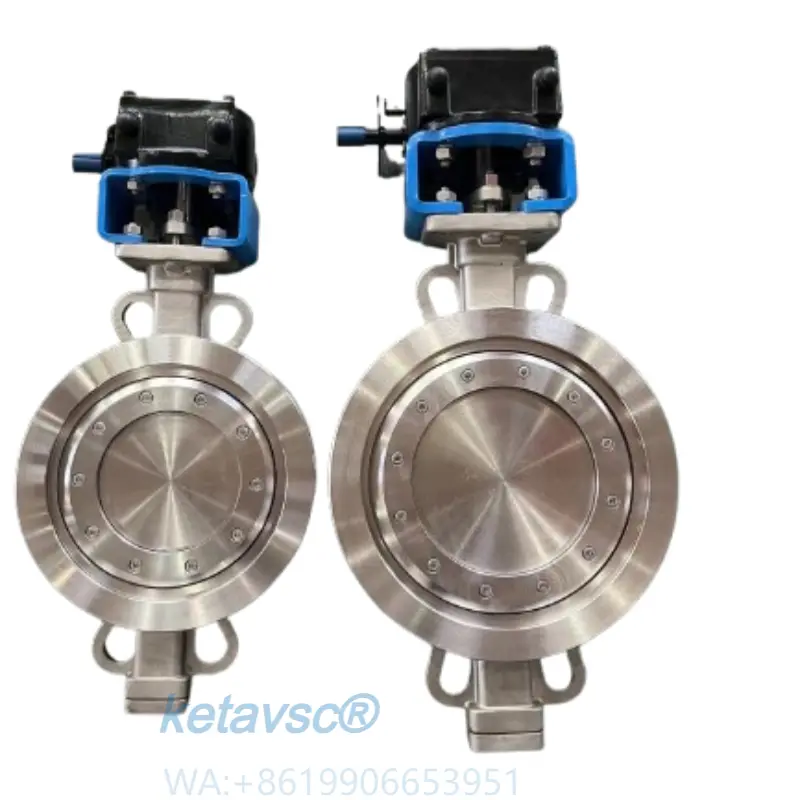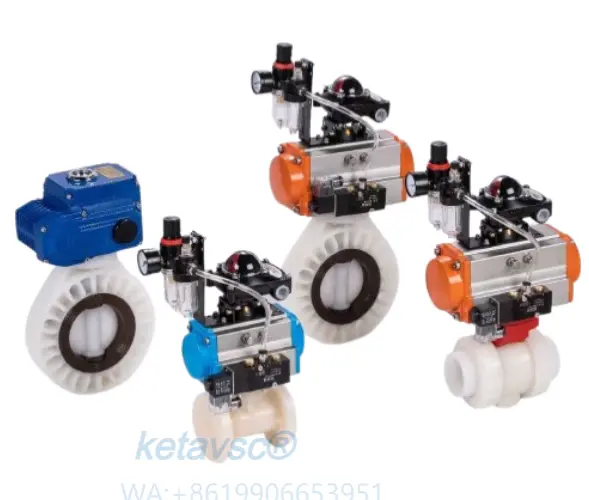butterfly valve introduction and advantage disadvantage
Butterfly valve introduction and advantages disadvantages
“Butterfly valve” is also called flap valve, is a simple structure of the control valve, can be used for the switch control of low-pressure pipeline media butterfly valve refers to the closing part (valve disc or butterfly plate) for the disc, revolving around the valve shaft to achieve the opening and closing of a valve. It can be used to control the flow of various types of fluids such as air, water, steam, various corrosive media, mud, oil, liquid metal and radioactive media. It mainly plays the role of cutting and throttling on the pipeline. The opening and closing part of the butterfly valve is a disc-shaped butterfly plate that rotates around its own axis in the valve body to achieve the purpose of opening and closing or adjusting.
Working principle
The butterfly valve is a kind of valve that is used to open, close or adjust the flow rate of the medium by rotating the disc type opening and closing part about 90°. The butterfly valve is not only simple in structure, small in size, light in weight, saving in material consumption, small in installation size, small in driving torque, simple and rapid in operation, but also has good flow regulation function and closing sealing characteristics, which is one of the fastest developing valve varieties in recent decades.
Structure
The butterfly valve is mainly composed of the valve body, the valve stem, the butterfly plate and the sealing ring. The valve body is cylindrical, the axial length is short, and the built-in butterfly plate.
Structure characteristics of butterfly valve
Butterfly valve has the following characteristics:
1. Butterfly valve has the characteristics of simple structure, small size, light weight, material consumption, small installation size, quick switching, 90° reciprocating rotation, small driving torque, etc., for cutting, connecting, adjusting the medium in the pipeline, with good fluid control characteristics and closing sealing performance.
2. The butterfly valve can transport mud, and the liquid accumulation in the pipe mouth is minimum. At low pressure, good sealing can be achieved. Good adjustment performance.
3. The streamlined design of the butterfly plate makes the fluid resistance loss small, which can be described as an energy-saving product.
4. The valve stem is a through rod structure, after tempering treatment, has good comprehensive mechanical properties and corrosion resistance, abrasion resistance. When the butterfly valve is opened and closed, the valve stem only rotates without lifting and lifting operation, and the packing of the valve stem is not easy to damage and the seal is reliable. It is fixed with the taper pin of the butterfly plate, and the overhang end is designed to prevent the valve stem from breaking out when the connection between the valve stem and the butterfly plate is accidentally broken.
5. Connection methods include flange connection, clamp connection, butt welding connection and lug clamp connection. The driving forms are manual, worm gear transmission, electric, pneumatic, hydraulic, electro-hydraulic linkage and other actuators, which can realize remote control and automatic operation.
Butterfly valve is divided into concentric butterfly valve, single eccentric butterfly valve, double eccentric butterfly valve, three eccentric butterfly valve.
1. Concentric butterfly valve
The concentric butterfly valve has the stem axis, the center of the butterfly plate and the center of the body in the same position, the structure is simple and the manufacture is convenient. Common rubber lined butterfly valves belong to this category. Because the disc and the seat are always in the state of squeezing and scraping, the resistance is large and the wear is fast.
2. Single eccentric butterfly valve
In order to solve the extrusion problem of the butterfly plate and the seat of the concentric butterfly valve, the single eccentric butterfly valve is produced, and its structural characteristics are that the stem axis deviates from the center of the butterfly plate, so that the upper and lower ends of the butterfly plate are no longer the rotating axis, dispersed, and the excessive extrusion of the upper and lower ends of the butterfly plate and the seat is reduced. Because the rotary center of the butterfly plate (that is, the center of the valve shaft) and the sealing section of the butterfly plate are set eccentrically, the sealing surface of the butterfly plate is gradually separated from the sealing surface of the valve seat during the opening process. When the butterfly plate is rotated to 20° ~ 25°, the sealing surface of the butterfly plate is completely separated from the sealing surface of the valve seat. When the butterfly plate is fully opened, a gap is formed between the two sealing surfaces, thus making the butterfly valve in the opening and closing process. The relative mechanical wear and extrusion between the two sealing surfaces are greatly reduced, thus ensuring the sealing of the butterfly valve.
3. Double eccentric butterfly valve
On the basis of the single eccentric butterfly valve further improved molding is the most widely used double eccentric butterfly valve. Its structural characteristics are that the axis of the valve stem deviates from the center of the butterfly plate and from the center of the body. The effect of double eccentricity enables the disc to be quickly removed from the seat after the valve is opened, greatly eliminating unnecessary excessive squeezing and scratching between the disc and the seat, reducing the opening resistance, reducing wear, and improving the seat life. Due to the size bias between the rotary center of the butterfly plate (the center of the valve shaft) and the center line of the valve body on the basis of the single eccentric butterfly valve, the sealing surface of the butterfly plate will be removed from the sealing surface of the valve seat faster than the single eccentric butterfly valve during opening. When the butterfly plate is rotated to 8° ~ 12°, the sealing surface of the butterfly plate will be completely removed from the valve seat seal. A larger gap is formed between the two sealing surfaces. The design of this type of butterfly valve greatly reduces the mechanical wear and crowded pressure deformation between the two sealing surfaces, and improves the sealing performance of the butterfly valve.
Triple eccentric butterfly valve
To withstand high temperature, must use a hard seal, but the leakage is large; To have zero leakage, a soft seal must be used, but it is not resistant to high temperatures. In order to overcome the contradiction of double eccentric butterfly valve, the butterfly valve is eccentric for the third time. The so-called third eccentricity is that the shape of the sealing pair is not a positive cone, but an oblique cone.
Because the center line of the valve seat is offset with the center line of the valve body on the basis of the double eccentric butterfly valve, the sealing surface of the butterfly plate is immediately detached from the sealing surface of the valve seat at the opening moment during the valve opening process, and the sealing surface of the valve seat is contacted and compressed at the closing moment. When fully opened, a gap is formed between the two sealing surfaces and the double eccentric sealing butterfly valve. The design of this type of butterfly valve completely eliminates the mechanical wear and abrasion between the two sealing surfaces, so that the sealing performance and service life of the butterfly valve are greatly improved.

Advantages
1. Good fluid control performance
When the butterfly valve is in the fully open position, the thickness of the butterfly plate is the only resistance when the medium flows through the valve body, so the pressure drop generated by the valve is very small, coupled with the structural length and overall height of the butterfly valve is small, and the opening and closing speed is fast, so it has good flow control characteristics.
2, the field of large diameter adjustment is widely used
When the butterfly valve is opened between about 15° and 70°, sensitive flow control can be carried out, so the application of butterfly valves is very common in the field of large diameter regulation.
3, light structure, compact body, relatively low cost
The butterfly valve uses a thin metal disc as a flow control mechanism, which is small and takes up little space, but is strong enough to regulate the flow of fluid. And the butterfly valve has a compact body, making it suitable for pipe systems in narrow locations. Large diameter pipes require the use of larger valves, which increases the cost of more manufacturing materials, and butterfly valves will be cheaper than other valves of the same size, such as ball valves, because they use less manufacturing materials.
4, sealing fast and efficient
Butterfly valves provide a quick seal when started, making them ideal for high-precision flow applications.
5, low pressure drop and high pressure recovery
Although the disc is always present in the fluid, the butterfly valve has a low pressure drop. Low pressure drop is critical for managing the pumping and energy requirements of a system, and butterfly valves are designed to allow fluid to recover energy quickly after it leaves the valve.
6, the maintenance requirements are relatively low
Compared to other valves, the butterfly valve has no “pockets” that may trap liquids or impurities, so it requires less maintenance and intervention, and the installation of the butterfly valve is relatively simple, only needing to clamp between adjacent pipe flanges, without complex installation processes such as welding.
7. Simple operation
Due to the compact structure and light weight of the butterfly valve, relatively low torque is required to operate. Thin metal plates use a small amount of force to overcome the frictional resistance of the fluid.
8. Easier to automate
Because small actuators can provide enough torque for their operation, this translates into lower operating costs – smaller actuators consume less power and cost less to add to the valve.

Disadvantages
1, butterfly valve is not suitable for high pressure throttling
Butterfly valves can only be used for throttling in low pressure applications, and the opening is limited to between 30 degrees and 80 degrees.
2. The butterfly valve is susceptible to cavitation and blocked flow
In the open position, the valve does not provide a full port, and the presence of the disc in the fluid flow path exacerbates the buildup of impurities around the valve, increasing the likelihood of cavitation.
3, relatively low corrosion resistance
The corrosion resistance of butterfly valve is lower than that of gate valve and ball valve. Fluids wash out butterfly valves as they flow through them, and over time the discs deteriorate and can no longer provide a seal, with a higher rate of corrosion if viscous fluid service is handled
4. Pigging difficulties exist
When the disc of the butterfly valve is in the fully open position, it impedes system cleaning and prevents the line containing the butterfly valve from being pigged.
Installation
Installation and maintenance
1. During installation, the valve disc should be stopped in the closed position.
2, the opening position should be determined according to the rotation Angle of the butterfly plate.
3. The butterfly valve with a bypass valve should be opened before opening.
4, should be installed according to the manufacturer’s installation instructions, large weight butterfly valve, should be set a solid foundation.






